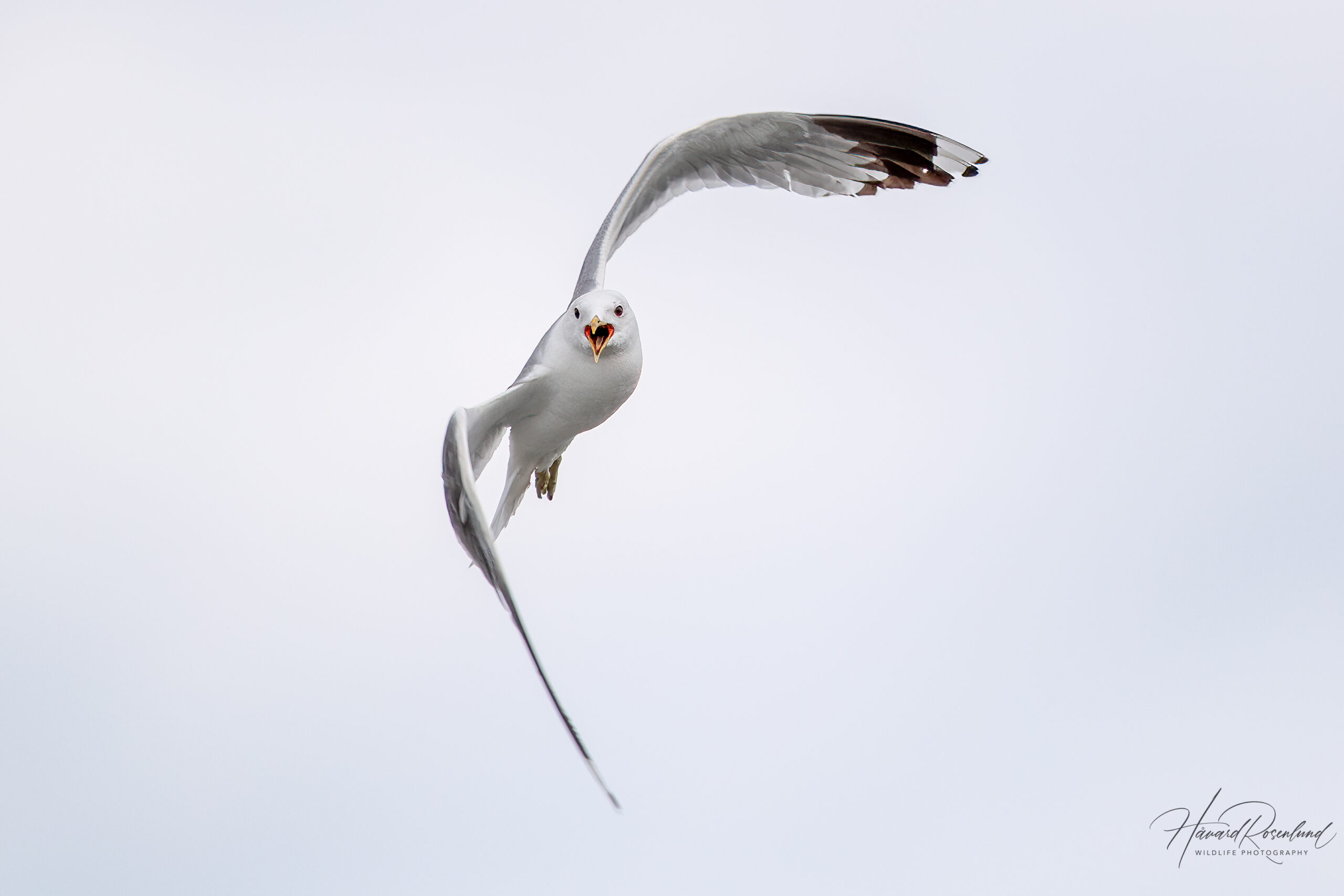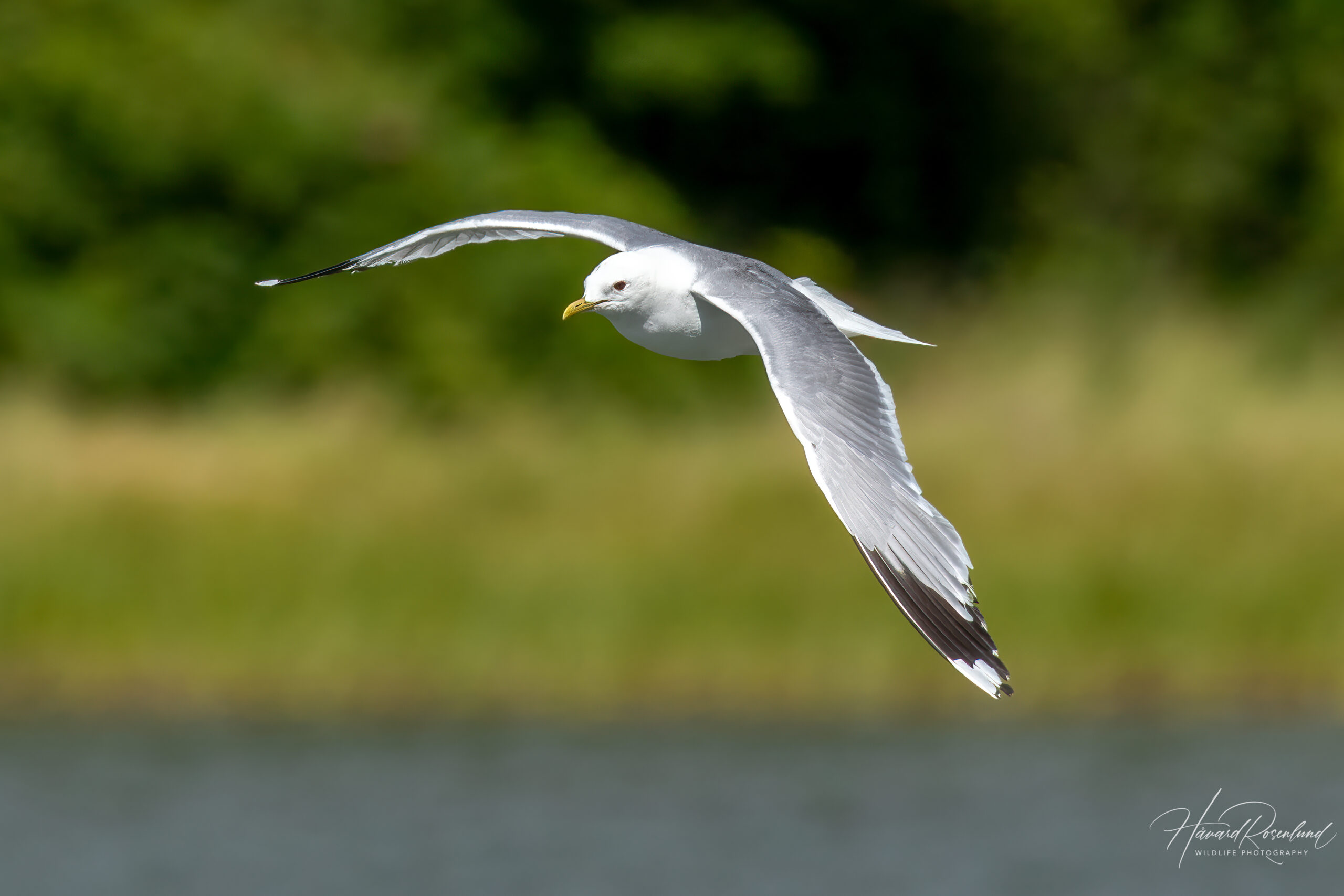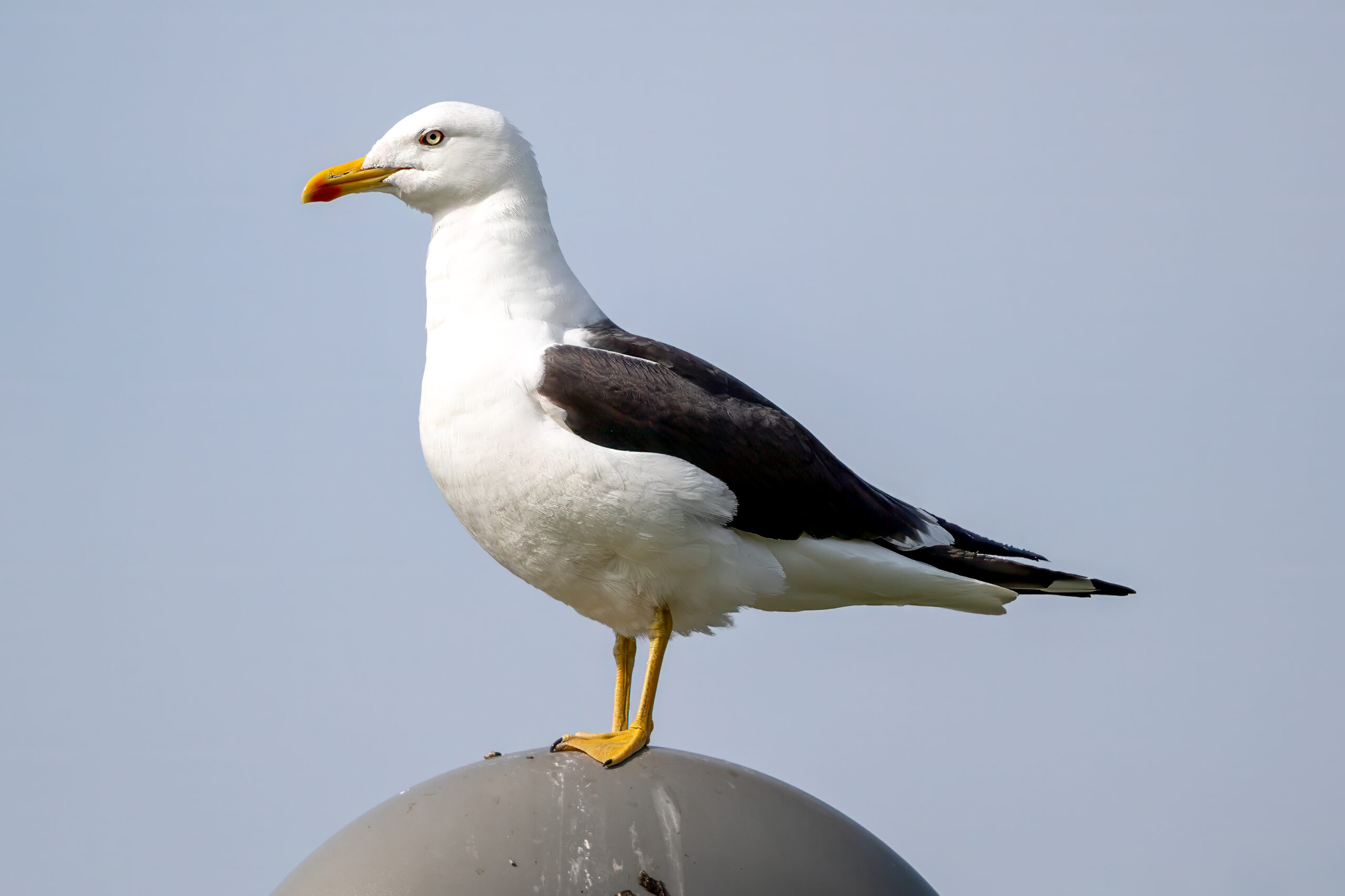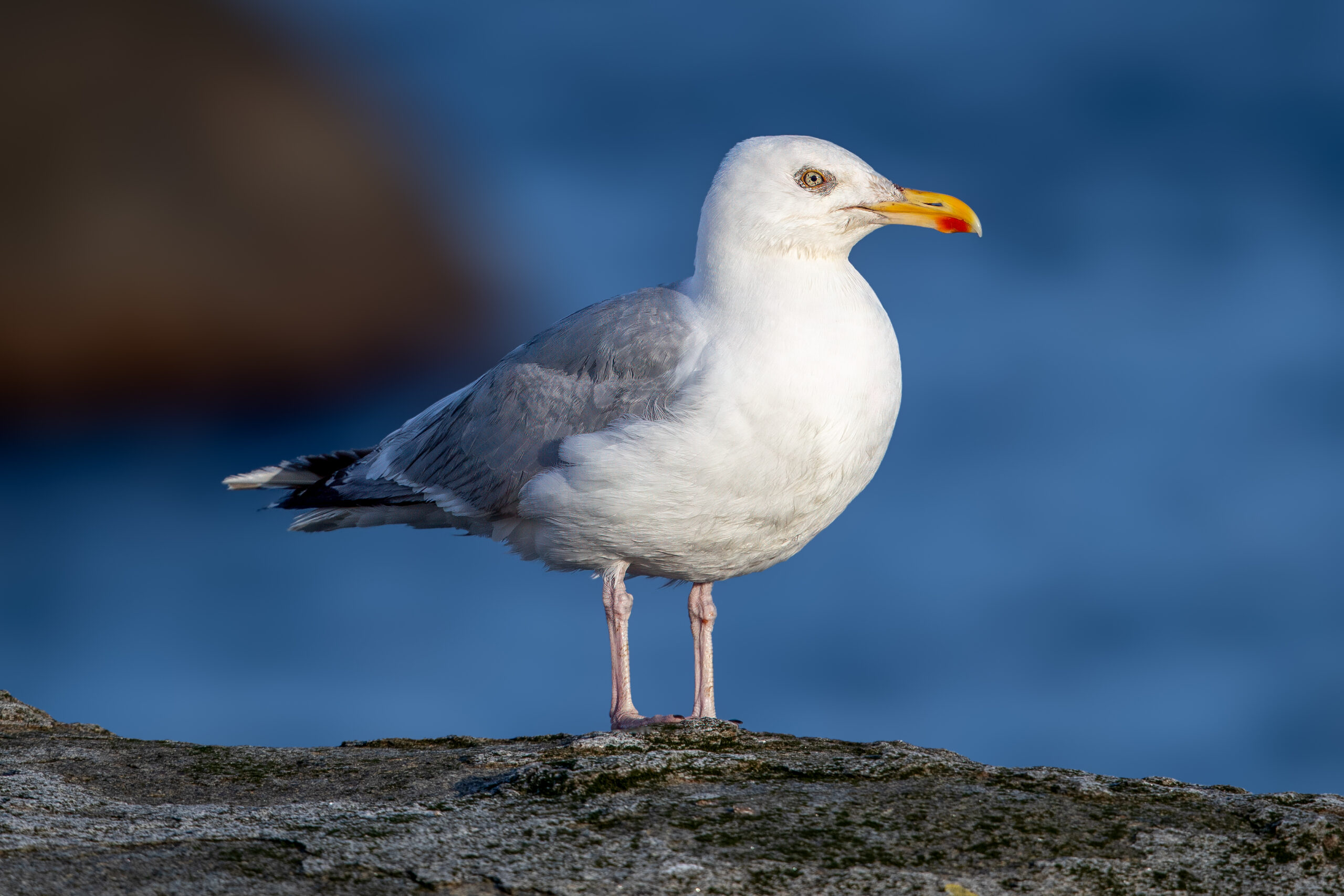Description
The common gull (Larus canus) is a medium-sized gull species found across Eurasia. As most gulls, it exhibits a blend of grey and white plumage. Adults typically have a body length of 40-46 cm (15.7-18.1 in), with a wingspan of 110-125 cm (43-49 in). Notable features include a greenish-yellow bill, legs, and feet. During the breeding season, adults display a white head and underparts, with a light grey back and wings. The wings also feature black tips with white spots, known as “mirrors”. Juvenile common gulls have a mottled brown appearance and develop their adult plumage over two to three years. This species can be distinguished from similar gulls by its smaller size, lighter grey back, and the greenish tint of its legs and bill. In contrast to many larger gulls, it also lacks the red spot on the lower jaw of the bill.
Diet & habitat
Common gulls are versatile feeders, their diet comprising fish, insects, worms, grains, and small rodents. They are opportunistic and will also scavenge on waste. The species have been observed using tools, such as using pieces of bread as bait to catch fish, showcasing their adaptability and intelligence. These gulls inhabit a range of environments, including coasts, estuaries, lakes, and rivers, as well as urban areas where they can be found in parks and garbage dumps. Even though they often prefer coastal areas, these birds can be found far inland, even on mountains, as long as there is water and a sufficient source of food present.
Migration
The common gull exhibits varied migration patterns based on its geographic location. Populations in the northern part of the range tend to migrate southwards during the winter, while those in milder climates may remain year-round. Their migration is generally not long-distance, with most moving only as far as necessary to avoid the coldest weather.
Nesting
Breeding season begins in late April to May. Common gulls nest in colonies, often on the ground, making nests of grass and twigs. They may also nest on buildings or cliffs in urban areas. Females typically lay 2-3 eggs, which both parents incubate for about 24-26 days. Chicks fledge at 35-40 days old but remain dependent on their parents for some time after. Parents can be very territorial during the breeding season, and is known to display aggressive behavior towards animals or humans who get to close to the nest.
Status
Despite its name, the common gull is not the most abundant gull species in many parts of its range. However, it does have a wide range and a large populations size and it is listed as least concern on the IUCN Red List. Some local populations are threatened by predation, disturbances at nesting sites, and pollution.









